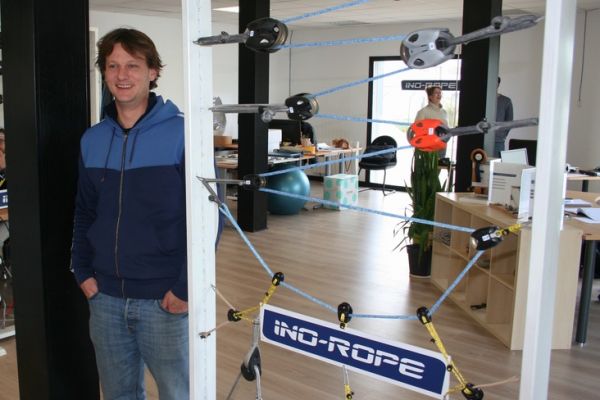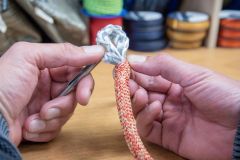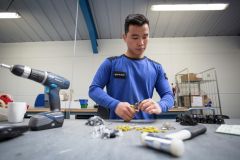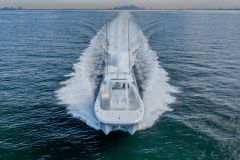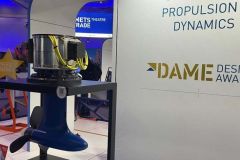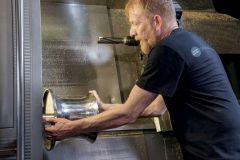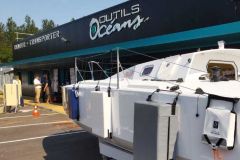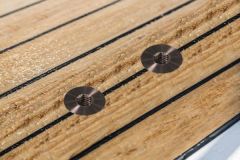Launched in 2013 by Julien Barnet and Thibault Reinhardt, Ino-Rope has established itself in the boating landscape, and beyond in various industries, with innovative textile solutions, for boats, but not only... To mark the company's 10th anniversary, we spoke to its CEO, Thibault Reinhardt.
Can you sum up the last ten years of Ino-Rope in a few words?
Originally in 2013, there were 2 buddies in the back of a garage with a pulley who dreamed of selling the concept, licenses, doing nothing more and sailing! Soon, we launched our website; which got the word out about synthetic fibers. The phone started ringing more and more. We started out in ocean racing, then moved on to the broader nautical sector, then to numerous industries, agriculture, aeronautics... We've even worked underground. Today, we're a structured industrial SME with premises and resources. We've opened up the field of possibilities without even realizing it. That's pretty exciting for the next ten years or so.
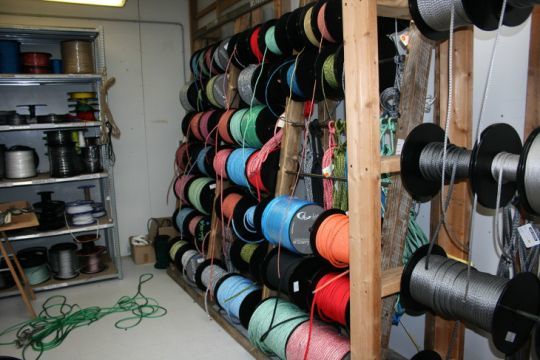
What have been your most memorable events over the past 10 years?
There are plenty of them. First, Armel Le Cléac'h's victory in the Vendée Globe, with a mast supported by our pulleys. More recently, the 1st 200-ton industrial pulleys for Solid Sail. But every month, something incredible happens. This winter, we delivered 1,500 mooring lines to 12 in 3 months. If someone had told me that 10 years ago, I wouldn't have believed it. Working with the Institut Français du Pétrole is also quite a technical accolade.
And in terms of products, what would be the most striking?
The pulley, of course, even if it's probably the hardest to sell. Changing mentalities is the hardest part. The Ino Ending pulley is the most accomplished.

We can also mention the mooring lines, with their ecological aspect. I often quote the port agent from Fouesnant who came to load the lines with a mason's tray, and who told me a year later that it had changed his life, that his back no longer hurt.
Even the simplest winch line has been carefully thought out.
How do you see textiles evolving in the boating industry?
10 years ago, it was all about ocean racing. Today, it's becoming more democratic, and we've been a key player in this, with our free tutorials and advice. Today, a textile shackle is much better accepted and understood. In 10 years' time, it will be even better. Textiles will have replaced what remains to be replaced, such as rigging. Outlets in other sectors will enable us to automate and improve, and make textiles cheaper than steel. Industrial structuring in other sectors will make it more accessible to the boating industry too.
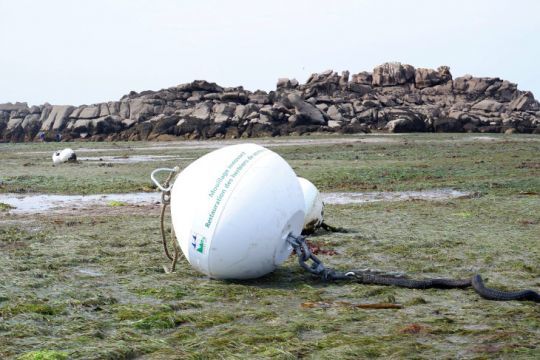
How do you see the technological evolution of textile fibers?
Over the next decade, we want to work on reusing fibers. Our material is virtually indestructible, and we can imagine using it first in ocean racing, then in boating, and finally in packaging. We have to make sure that every centiliter of oil is used to the full. In a world where raw materials are becoming increasingly scarce, we have to be smart to continue making high-tech products. It's important to continue R&D to prove principles and dismantle preconceived ideas, such as lifting standards where we're practically forced to use single-use straps!
Last but not least, I'd like to work with rope makers, seamstresses and end-users to structure the industry and make it even more virtuous. In 10 years, we haven't lost our soul, and that's exhilarating!
